Kevin Jou
ReF-LDM: A Latent Diffusion Model for Reference-based Face Image Restoration
Dec 06, 2024Abstract:While recent works on blind face image restoration have successfully produced impressive high-quality (HQ) images with abundant details from low-quality (LQ) input images, the generated content may not accurately reflect the real appearance of a person. To address this problem, incorporating well-shot personal images as additional reference inputs could be a promising strategy. Inspired by the recent success of the Latent Diffusion Model (LDM), we propose ReF-LDM, an adaptation of LDM designed to generate HQ face images conditioned on one LQ image and multiple HQ reference images. Our model integrates an effective and efficient mechanism, CacheKV, to leverage the reference images during the generation process. Additionally, we design a timestep-scaled identity loss, enabling our LDM-based model to focus on learning the discriminating features of human faces. Lastly, we construct FFHQ-Ref, a dataset consisting of 20,405 high-quality (HQ) face images with corresponding reference images, which can serve as both training and evaluation data for reference-based face restoration models.
Self-Supervised Robustifying Guidance for Monocular 3D Face Reconstruction
Dec 29, 2021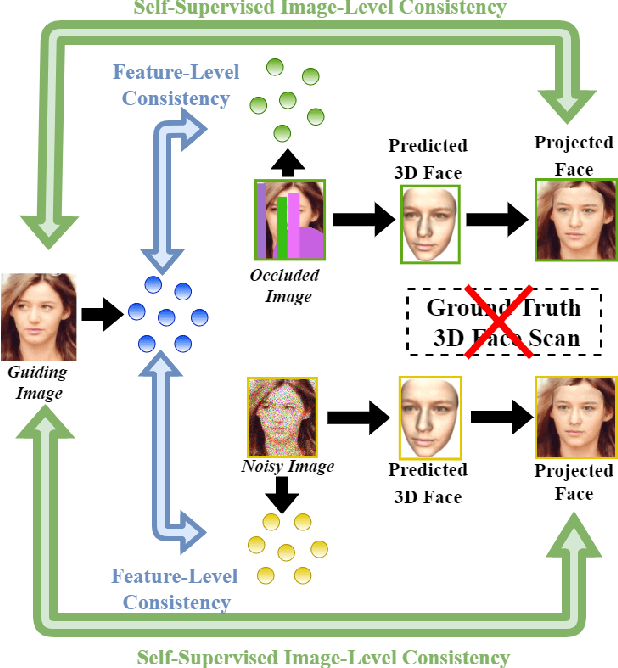
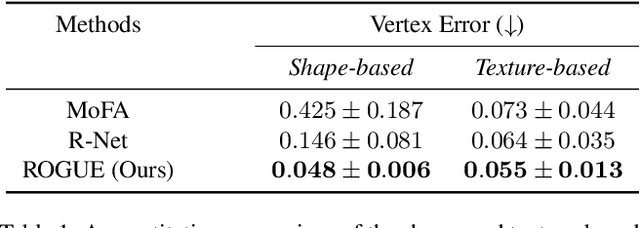
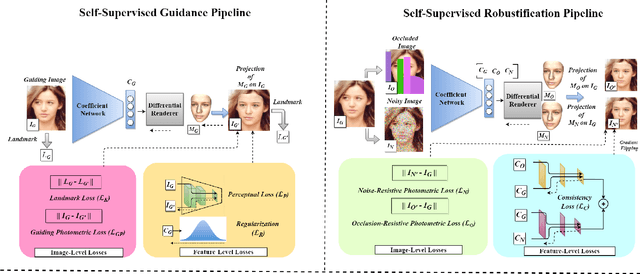
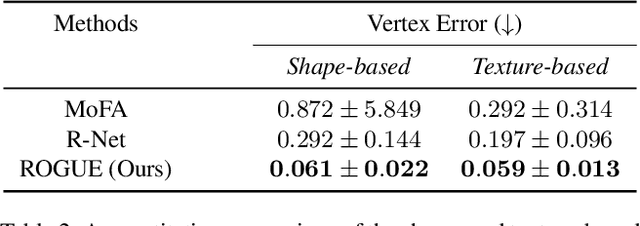
Abstract:Despite the recent developments in 3D Face Reconstruction from occluded and noisy face images, the performance is still unsatisfactory. One of the main challenges is to handle moderate to heavy occlusions in the face images. In addition, the noise in the face images inhibits the correct capture of facial attributes, thus needing to be reliably addressed. Moreover, most existing methods rely on additional dependencies, posing numerous constraints over the training procedure. Therefore, we propose a Self-Supervised RObustifying GUidancE (ROGUE) framework to obtain robustness against occlusions and noise in the face images. The proposed network contains 1) the Guidance Pipeline to obtain the 3D face coefficients for the clean faces, and 2) the Robustification Pipeline to acquire the consistency between the estimated coefficients for occluded or noisy images and the clean counterpart. The proposed image- and feature-level loss functions aid the ROGUE learning process without posing additional dependencies. On the three variations of the test dataset of CelebA: rational occlusions, delusional occlusions, and noisy face images, our method outperforms the current state-of-the-art method by large margins (e.g., for the shape-based 3D vertex errors, a reduction from 0.146 to 0.048 for rational occlusions, from 0.292 to 0.061 for delusional occlusions and from 0.269 to 0.053 for the noise in the face images), demonstrating the effectiveness of the proposed approach.
Bridging Unsupervised and Supervised Depth from Focus via All-in-Focus Supervision
Aug 24, 2021

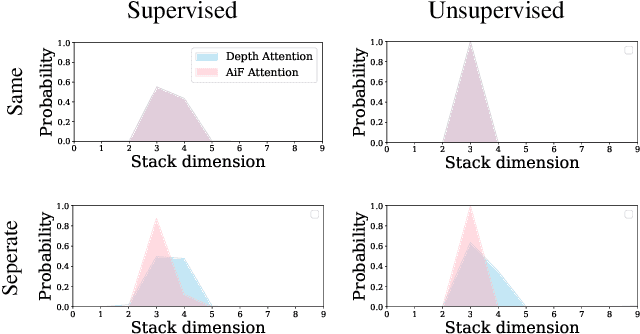
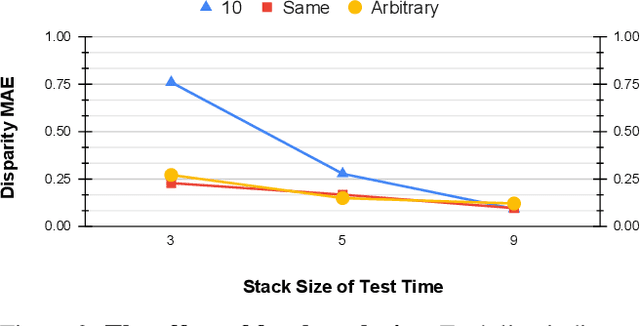
Abstract:Depth estimation is a long-lasting yet important task in computer vision. Most of the previous works try to estimate depth from input images and assume images are all-in-focus (AiF), which is less common in real-world applications. On the other hand, a few works take defocus blur into account and consider it as another cue for depth estimation. In this paper, we propose a method to estimate not only a depth map but an AiF image from a set of images with different focus positions (known as a focal stack). We design a shared architecture to exploit the relationship between depth and AiF estimation. As a result, the proposed method can be trained either supervisedly with ground truth depth, or \emph{unsupervisedly} with AiF images as supervisory signals. We show in various experiments that our method outperforms the state-of-the-art methods both quantitatively and qualitatively, and also has higher efficiency in inference time.
CLCC: Contrastive Learning for Color Constancy
Jun 09, 2021


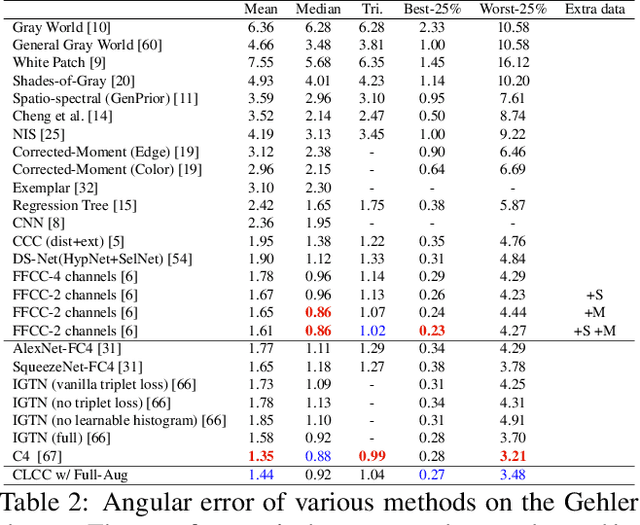
Abstract:In this paper, we present CLCC, a novel contrastive learning framework for color constancy. Contrastive learning has been applied for learning high-quality visual representations for image classification. One key aspect to yield useful representations for image classification is to design illuminant invariant augmentations. However, the illuminant invariant assumption conflicts with the nature of the color constancy task, which aims to estimate the illuminant given a raw image. Therefore, we construct effective contrastive pairs for learning better illuminant-dependent features via a novel raw-domain color augmentation. On the NUS-8 dataset, our method provides $17.5\%$ relative improvements over a strong baseline, reaching state-of-the-art performance without increasing model complexity. Furthermore, our method achieves competitive performance on the Gehler dataset with $3\times$ fewer parameters compared to top-ranking deep learning methods. More importantly, we show that our model is more robust to different scenes under close proximity of illuminants, significantly reducing $28.7\%$ worst-case error in data-sparse regions.
Network Space Search for Pareto-Efficient Spaces
Apr 22, 2021



Abstract:Network spaces have been known as a critical factor in both handcrafted network designs or defining search spaces for Neural Architecture Search (NAS). However, an effective space involves tremendous prior knowledge and/or manual effort, and additional constraints are required to discover efficiency-aware architectures. In this paper, we define a new problem, Network Space Search (NSS), as searching for favorable network spaces instead of a single architecture. We propose an NSS method to directly search for efficient-aware network spaces automatically, reducing the manual effort and immense cost in discovering satisfactory ones. The resultant network spaces, named Elite Spaces, are discovered from Expanded Search Space with minimal human expertise imposed. The Pareto-efficient Elite Spaces are aligned with the Pareto front under various complexity constraints and can be further served as NAS search spaces, benefiting differentiable NAS approaches (e.g. In CIFAR-100, an averagely 2.3% lower error rate and 3.7% closer to target constraint than the baseline with around 90% fewer samples required to find satisfactory networks). Moreover, our NSS approach is capable of searching for superior spaces in future unexplored spaces, revealing great potential in searching for network spaces automatically.
 Add to Chrome
Add to Chrome Add to Firefox
Add to Firefox Add to Edge
Add to Edge